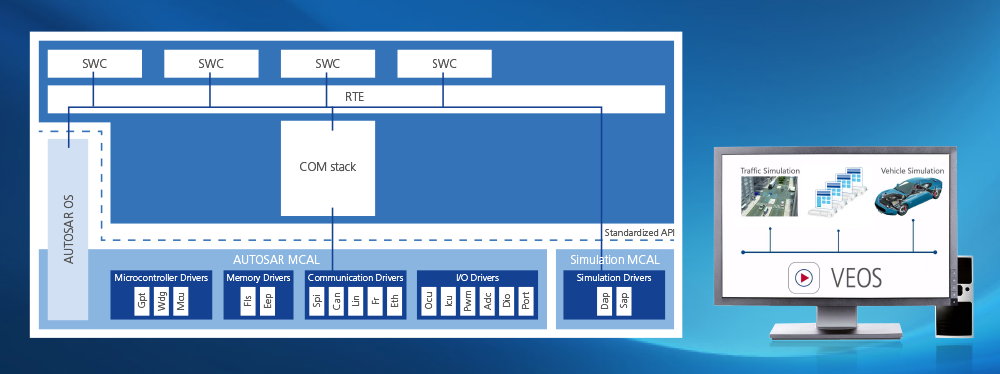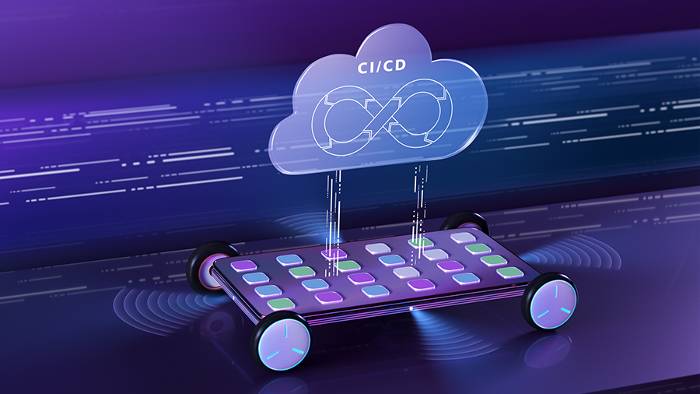As the complexity of a system increases, new measures are required to properly validate its functions. This is why Volkswagen is using virtualization more than ever in its validation processes.
When launching a new product on the market, automobile manufacturers assume a great deal of responsibility. For this reason, Volkswagen’s corporate mission is to ensure that the end product is free of defects. After all, reliable products are decisive for ensuring customer satisfaction and are an important factor when it comes to brand image.
New Challenges for Developers and Tools
Even when developing a relatively small function, the entire system always has to be taken into account for the test in order to provide information about the behavior and the quality of the function, as well as how it affects the system as a whole. The feedback from the overall system regarding the behavior of a function has to be available as soon as possible.
The Dilemma of Early Validation in the Overall System
But how can a function be tested when numerous system components are still being developed? The conventional approach involves testing system components first in order to validate them step by step in combination with other components in increasingly more comprehensive integration tests. While this works well for functions with a basic level of complexity, the method is no longer sufficient for functions that fall under the banner of holistic complexity. Indeed, errors in the components that are only relevant in combination with other components within the overall system are first detected in a much later stage of development.
A New Approach: Virtualizing the Entire Integration Test
A new approach is required. We could call this virtualizing the entire electronic control unit (ECU) integration test. The complete virtualization – that is to say, the software-in-the-loop (SIL) test – makes it possible to integrate all of the artifacts in a system regardless of their maturity level. Although this early SIL test initially delivers results that are not as realistic for the individual components, it nevertheless provides a comprehensive picture of the overall system behavior straight away. This makes it possible to assess the behavior of a component within the overall system, thus taking into account the holistic complexity throughout the entire development process to the highest degree possible given the respective circumstances.
Maximum Complexity Right from the Start Thanks to Virtualization
Especially during early stages, however, the test objects are likely to change as they are being developed. In the hardware-in-the-loop (HIL) test, these objects were the ECUs. The SIL integration test calls for a new way of thinking. Of course, ECU software is required for the validation, and we pack the ECU software in a specific form which we call virtual ECUs (V-ECUs). Preliminary software stages and connecting elements also play an important role in the beginning. This includes all key components, such as specifications, models, and glue code. The comprehensive nature of this integration ensures the necessary representation of the whole system, particularly during the early stages. Of course, rules and standards are needed in order to allocate and integrate artifacts uniformly. For example, the V-ECU approach re- commended by dSPACE describes how the software and the other components should be packaged as a virtual delivery artifact in parallel or upstream for ECU provisioning.
Multiplatform Simulations
This gives rise to completely new and exciting simulation possibilities: In addition to the traditional PC-based method, container-based options are also available, for example, with dockers for building multiplatform simulations on PCs or even highly scaled simulations in the cloud. In these cases, V-ECUs are executed using software simulation platforms like VEOS.

Industry-wide standards are an important prerequisite for virtualizing tests. This involves defining components according to the dSPACE V-ECU approach and integrating them into the VEOS simulation platform together with controlled system models.
Agile Development Speeds Up the Process
The agile method encourages a new type of collaboration. Synergetic objectives are developed quickly across departments, divisions, and even companies. In this case, it is necessary to share information promptly. The strict division of responsibilities in the past has evolved into cross-functional teams in order to achieve an overarching goal efficiently and by working together. This agile method requires new roles and responsibilities. For example, product owners represent and analyze the requirements of the customers (OEMs). They determine which functions are required and when. Their goal is to maximize the economic value of the operation. Then there are the scrum masters. They coordinate the tasks and optimize the collaboration between all participants. Their goal is to increase the efficiency of the process. The team members are assembled based on their areas of expertise at the participating companies. They include, for example, OEMs, suppliers, tool manufacturers, and engineering service providers.
Reinventing Validation Projects
In a current validation project, an agile team with members from several different companies, including Volkswagen, is working on a vision for a virtual overall network. This vision focuses on validating functions in the overall system with all relevant ECUs at an early stage of the development process. The approach first envisions gradually incorporating a virtual ECU into a model-based network. The team at dSPACE aims to implement this concept by making the project a reality and finding the right solutions. The dSPACE team is acting as the development team in the agile cooperation model. The employees from dSPACE have to use their own tools, and others, in the project as efficiently as possible. This leads to tool updates in accordance with the requirements that arise within the scope of the project.
A Win-Win Situation
Visualizing ECU integration tests and using a collaborative approach offers advantages to all parties involved. Tool manufacturers and suppliers obtain in- formation early on and can adjust their products to customer requirements. Customers (OEMs) benefit from solutions tailored precisely to their requirements with a high level of efficiency and ultimately an increase in the economic efficiency of their enterprises.
You have had a very interesting career. How has it prepared you for the challenges of the automotive industry?
I was born in China, and I have been living in Germany for 20 years now. I live in two distinct cultures. And by culture I mean the way we perceive things and people. How we understand things and people. How we treat things and people. In fact, many of the challenges in the automotive industry are related to culture. Many problems are not actually technical. That is why we need to overcome these cultural barriers.
What does this mean for validating software-defined vehicles?
To a certain extent, software-defined vehicles can be developed and tested virtually. But we always have to ask ourselves whether we have taken the holistic complexity into account. We need a comprehensive approach. And “comprehensive” opposes the traditional, strict division of responsibilities, competencies, and processes. First and foremost, we need a culture change.
How can we achieve that?
We need to work more closely together and keep our eye on an overarching, synergetic goal. In our culture, there is too much competitive thinking. Competition destroys the prospect of all participants winning. That is why progress is so slow. For example, we are not using the full potential of simulation. We are probably just using 10% of that potential.
What is missing?
During the validation process, we generally concentrate on only individual components because we see ourselves as individual development teams from a structural or technical point of view and not as the embodiment of the overall system. In the future, all of the people involved in the development process, regardless of the development stage and the locality (departments, domains), will have to play their part to form an overall network in which the validation can take place.
What is keeping people from participating in synergetic partnerships?
Aside from protecting intellectual property, I see two reasons for this. On the one hand, most people want to see a direct reward for themselves in every activity. And on the other hand, everyone wants to show only perfect final results to maintain their image, and nobody wants to share problems or provisional results with colleagues from other domains. But the truth is that with the current level of product and process complexity, it is only possible to derive a direct individual benefit from a greater, overarching reward, which can only be produced if everyone lends a hand. You can cut off a piece of cake only after the entire cake has finished baking. We all have to take a leap of faith in the end. And the fear of tarnishing our reputation prevents us from taking advantage of these valuable opportunities to detect problems and nip them in the bud, which would be a success for everyone.
About the interviewed:

Dr. Chen Ma
Dr. Chen Ma was the product owner for the project to virtualize comprehensive integration testing and now works as an E/E project manager at Volkswagen AG in Wolfsburg.







